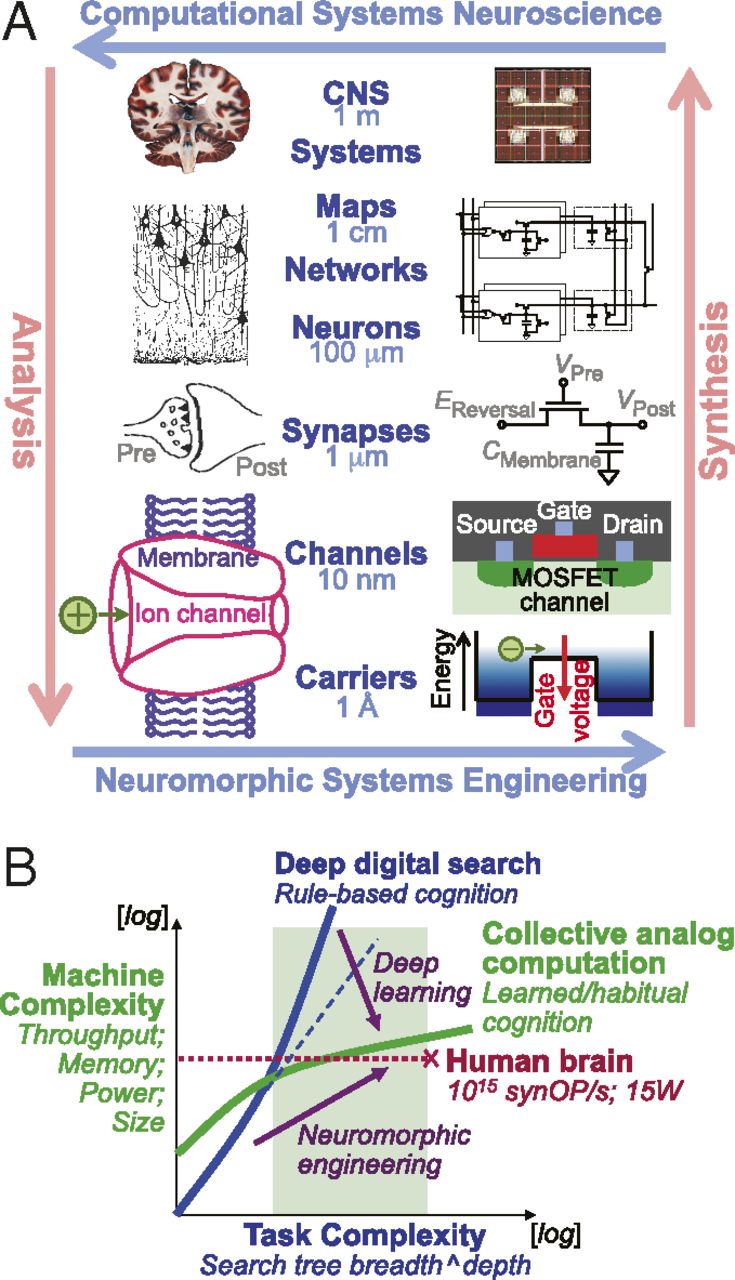Circa 2013
One of the greatest aspirations of the human mind has been to realize machines that surpass its cognitive intelligence. The rapid expansion in computing power, about to exceed the equivalent of the human brain, has yet to produce such a machine. The article by Neftci et al. in PNAS (1) offers a refreshing and humbling reminder that the brain’s cognition does not arise from exacting digital precision in high-performance computing, but rather emerges from an extremely efficient and resilient collective form of computation extending over very large ensembles of sluggish, imprecise, and unreliable analog components. This observation, first made by John von Neumann in his final opus (2), continues to challenge scientists and engineers several decades later in figuring and reproducing the mechanisms underlying brain-like forms of cognitive computing.
Related developments are currently unfolding in collaborative initiatives engaging scientists and engineers, on a grander scale, in advancing neuroscience toward understanding the brain. In parallel with the Human Brain Project in Europe, the Brain Research through Advancing Innovative Neurotechnologies Initiative promises groundbreaking advances in enabling tools for revolutionizing neuroscience by developing nanotechnology to probe brain function at greatly increased spatial and temporal detail. Engineers are poised to contribute even further in revolutionizing such developments in neuroscience. In this regard it is helpful to relate the inquisitive nature of science—analysis—to the constructive power of engineering, synthesis.
